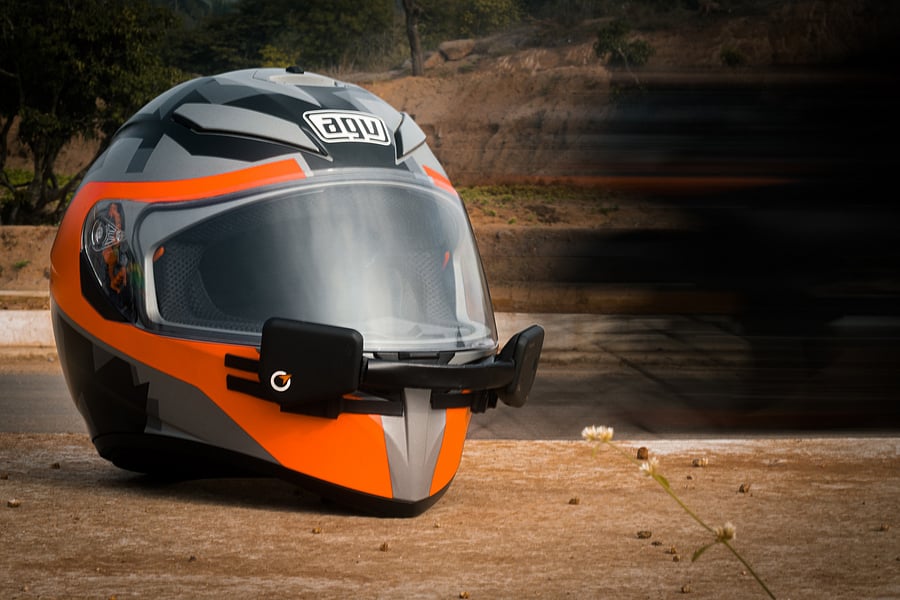

started ‘PupilMesh, a startup in 2018.
Three techies, Pradeep P, Riya G, and Milind M, from a Bengaluru-based startup called ‘PupilMesh’, have developed an innovative device called ‘NAVisor’. It helps riders in proper navigation and helps gain control to avoid any mishap on roads.
How did they hit upon the idea? Pradeep P, President and Chief Operating Officer of PupilMesh, explains, ”We developed an Augmented Reality (AR) helmet three years ago as students, to help bikers navigate and communicate. During this phase, NAVisor took its birth.”
He says PupilMesh was incorporated in 2018. PupilMesh received a funding of Rs 20 lakh from IIM-Bangalore and has received support from Texas instruments, SINE (Society for Innovation and Entrepreneurship), and IIT Bombay for innovation. The mission of the company is to develop augmented reality technologies that enhance the efficiency of completing everyday tasks of users by reducing cognitive load. ”NAVisor is a helmet-mounted device that provides simple and intuitive visual directional cues with LEDs in the rider’s peripheral vision. It connects to the rider’s phone that streams navigational data from an app, powered by MapMyIndia via Bluetooth,” says Pradeep. NAVisor has a 350 mAh rechargeable lipo battery to provide a long battery life. The weight of the device is less than 80 grams and mounts rigidly to the helmet.
The team at PupilMesh conducted a survey involving more than 6,000 bikers across India.
They looked at the troubles they face while navigating. From this survey, they concluded that it was not easy and safe to ride on a two-wheeler as riders used unsafe and illegal methods of earphones and phone stands for travel. “NAVisor is a legal, safe, and convenient alternative guide to help users manoeuvre on roads. It prevents accidents by keeping the rider’s eyes on the road by providing navigation using LEDs in his line of sight,” reiterates Pradeep.
About the challenges faced in making this device, he says, “The biggest worry while designing NAVisor was to ensure that LED lights do not distract riders and instead guide them with simple visual direction cues in the correct line of sight.” He added that to tackle this year-long problem, a team of 12 engineers had to rigorously test on various bikers across the country to know about the device’s efficacy.
Regarding the experience of riders who are using this device, Pradeep says, “More than 100 NAVisors are helping many bikers who ride in various terrains and temperatures.”
He adds that from the navigational survey conducted on riders who used existing methods such as phone stands, earphones, and Bluetooth audio headsets, the performance rating was 2.5 on a scale of 5. But with NAVisor it was 4 out of 5.
NAVisor devices are expected to hit the market by September this year.
